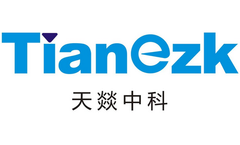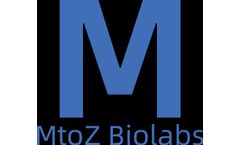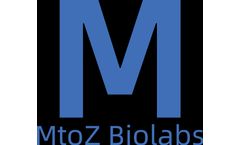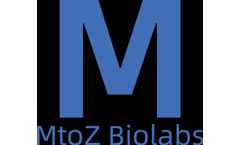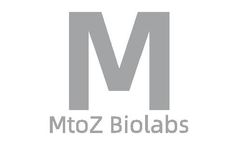Drug Efficacy Articles & Analysis
70 articles found
These heavy metals—primarily from catalyst residues—not only affect drug efficacy but also pose serious health risks to patients. As a result, pharmacopoeias in various countries impose strict limits on heavy metal content in pharmaceutical substances. ...
As seasonal allergies affect millions globally, the demand for advanced, reliable treatments is growing rapidly. Behind the scenes of this progress lies a powerful class of materials: fluoropolymers. While often associated with aerospace, semiconductor, and chemical industries, fluoropolymers also play a vital—yet underappreciated—role in pharmaceutical manufacturing, particularly in ...
Introduction PEGylation, the process of attaching polyethylene glycol (PEG) chains to therapeutic molecules, has become a cornerstone in pharmaceutical development. This technique improves the pharmacokinetic and pharmacodynamic properties of drugs, enhancing their stability, solubility, and circulation time while reducing immunogenicity. Since its first FDA-approved application in 1990 with ...
This diversity allows for the metabolism of a wide range of compounds, influencing the pharmacological effects and toxicity of drugs. Role in Drug Metabolism The role of cytochrome P450 in drug metabolism is two-fold: it can either detoxify drugs or convert them into active metabolites. The metabolic pathways involving CYP ...
Researchers utilize these cells to explore the efficacy of drugs, assess toxicology, and understand the underlying mechanisms of skin diseases such as fibrosis, psoriasis, and melanoma. ...
Preclinical drug discovery represents a critical phase in the development of new therapeutics. ...
This article explores the importance of drug screening in drug-resistant cells and its implications for advancing therapeutic strategies. ...
Their unique chemical properties, such as reactivity and ability to form diverse structures, make them invaluable in drug synthesis and other industrial applications. This article delves into the chemical characteristics of phosphorus compounds, their applications in drug development, and their significance in enhancing laboratory efficiency. ...
Additionally, in silico screening techniques, such as molecular docking, have become invaluable tools in predicting how potential drugs may interact with nuclear receptors at a molecular level. These computational methods can significantly reduce the time and resources needed in the early stages of drug development. ...
Pharmaceutical Development: These cell lines are essential in the drug discovery pipeline, allowing for high-throughput screening and functional assays to evaluate drug efficacy and safety. ...
Obesity is a significant contributor to respiratory disorders such as Obesity Hypoventilation Syndrome (OHS) and sleep apnea, both of which are characterized by reduced respiratory chemosensitivity. These conditions not only impair breathing but also exacerbate the health risks associated with obesity. Recent research from Rivera (2024) investigates the potential of setmelanotide, a ...
Liposomes, spherical vesicles composed of one or more phospholipid bilayers, have garnered significant attention in the field of drug delivery due to their unique properties. These nanocarriers offer a promising approach to overcome challenges associated with traditional drug administration, enhancing therapeutic efficacy while minimizing side ...
Medical advancement relies on clinical trials, which are essential for the development of safe and effective innovative treatments. However, the success and general applicability of these treatments heavily depend on the diversity of the participants involved¹?³. This blog explores the importance of achieving data diversity in clinical trials to enhance clinical trial results and ...
Functions of PeptidomimeticsPeptidomimetics have a wide range of functions and are being increasingly explored in drug discovery and development because of their potential therapeutic benefits. ...
Pharmacokinetic studies serve as the foundation for understanding the drug's bioavailability – the degree and rate at which an administered drug reaches the systemic circulation. ...
The presence of these impurities can affect the efficacy, safety, and stability of drugs. Therefore, the detection and analysis of glycosylation impurities are crucial in ensuring the quality and therapeutic effectiveness of pharmaceutical products.What are Glycosylated ...
Also, Protein-Protein Interaction Sequencing can be applied to drug target screening and effectiveness evaluation. By studying protein interactions, new drug targets can be discovered, further facilitating drug screening and efficacy evaluation.Although Protein-Protein Interaction Sequencing has extensive applications in life ...
Antibody-drug conjugates (ADCs) are a new class of drugs that combine the advantages of both antibodies and small molecule toxins. ...
Dr. Kate Sasser from Tempus led a discussion on the potential of antibody-drug conjugates (ADCs), their challenges in targeting tumor antigens, and the future of cancer treatment with Dr. Daniel Johnson, Dr. Funda Meric-Bernstam, and Dr. Kellogg Parsons. The oncology field is rapidly advancing with the development of antibody-drug conjugates (ADCs), offering new hope for ...
ByTempus
CD can differentiate the different chiral forms (enantiomers) of drugs, which is critical to ensuring drug safety and efficacy.2. Study of Drug and Target Molecule InteractionsCD can be used to analyze the binding mode of drugs to their biological targets (such as proteins, nucleic acids, etc.). This information ...

